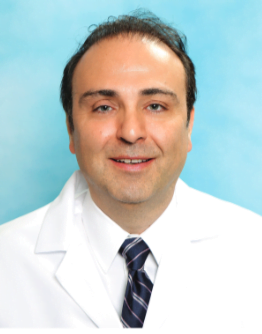Editor’s intro: Implementing less complicated systems that are also technology friendly can help to achieve better results more quickly. Read Dr. Abedi’s introduction to find out more about simplifying the art and science of endodontics.

Laparoscopic cholecystectomy is the eighth-most performed surgery in the United States. Until 1987, these were completed through an open technique. Around 1987, surgeons started to use a laparoscope and trocars to remove the gallbladder. U.S. Surgical and a few key clinicians developed specialized instruments, the most important of which was the Automatic Clip Applier. Over the next 5-7 years, an entire industry was born. Hundreds of products were developed. However, in 2018, the procedure was back to 10-12 basic steps with the Automatic Clip Applier being the only advanced tool used 80% of the time, while clinical outcomes are at an all-time high. Cataract surgery, among others, followed this exact same trajectory.
I tell you this story because it is my belief, we as clinicians, need to think about how we can simplify and create systems that address 80% of the pathology that is diagnosed. In our group, my colleagues and I perform approximately 40,000 RCTs a year, and we are growing to 50,000-60,000 by 2020. With the increased use of cone beam technology and strong oral-systemic health correlations, we firmly believe that pathology diagnosis will only increase. Schools are not going to keep up with that demand, so we as clinicians need to get better results, faster than before.
Technology is fantastic, and I love to play with new devices. However, what is going to take the profession to the next level is not a new NiTi file design, or other gadgets designed to do something we already do but add time or massive cost. The change must be due to our collective approach to treatment.
At Cornerstone Dental Products, our focus is on innovations that simplify the RCT process and remove steps and time, not add to them. The AccuFile is a perfect example: Clip the apex locator on the handle, not the file shaft, and produce this file at the same cost as traditional hand files. Because we are a company owned by practicing endodontists, and our vision is to simplify and create defined systems, anything we make has these goals in mind.
Beyond products, which may come or may not, my sincere message to my fellow clinicians is to really think about how we collaborate on simplifying the art and the science of root canal therapy and apical surgery. What can we do to remove unnecessary steps? What can we do to standardize the approach like our General Surgeon colleagues have done with the laparoscopic cholecystectomy? How can we be proactive in doing this before the insurance reimbursements force us to do this? Or the demand of more and more pathology diagnosed with less clinical bandwidth forces us? In our group, we actively discuss this on a regular basis. However, we know that if we can engage the collective power of the endodontic community, we will arrive at a more optimal solution, which will drive the right innovations that simplify and reduce the time to treat endodontic disease.
Hamid Abedi, DDS, MS, MBA
Utilizing less complicated systems and techniques can help endodontists focus on positive outcomes. Check out Dr. John West’s insights into this topic in his article, “The three Fs of predictable endodontics: finding, following, and finishing,” here.
Stay Relevant With Endodontic Practice US
Join our email list for CE courses and webinars, articles and more..


